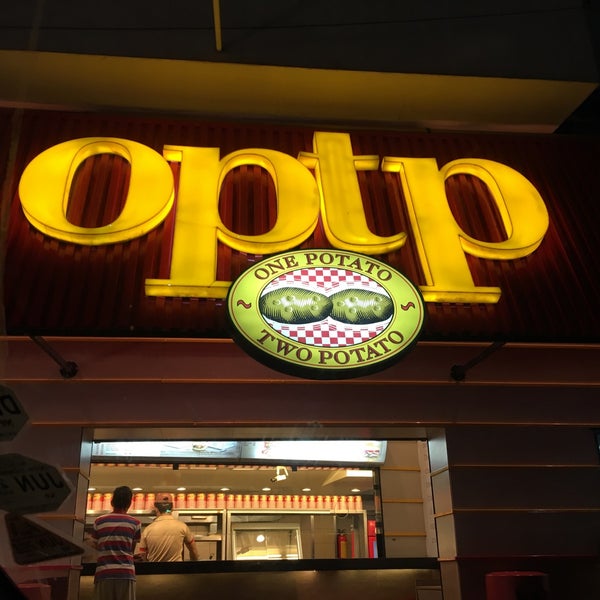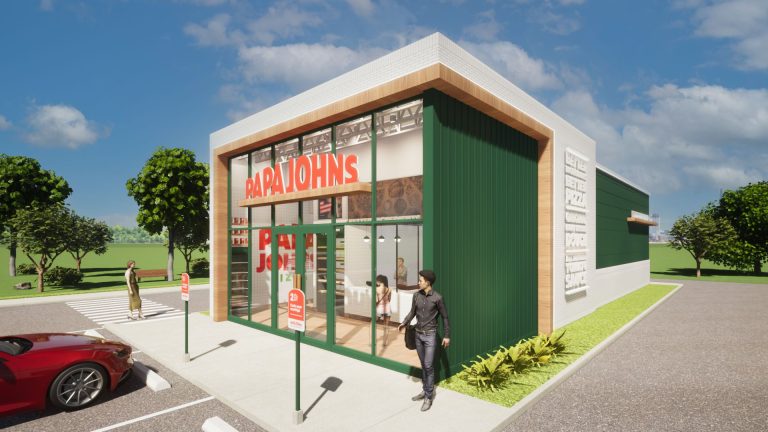Domino’s-The Journey of a Global Pizza Empire
Introduction
Domino’s Pizza, known globally for its delicious pizzas and innovative delivery system, is a leader in the fast-food industry. With its origins dating back to 1960, Domino’s has grown from a single store in Ypsilanti, Michigan, to a global powerhouse with over 17,000 stores in more than 90 countries. This article will delve into the history of Domino’s, its business model, menu evolution, global expansion, marketing strategies, community engagement, and its impact on the fast-food industry, along with future prospects. Also check out KFC history.

The Origins of Domino’s
Founding and Early Years
Domino’s Pizza was founded in 1960 by brothers Tom and James Monaghan in Ypsilanti, Michigan. The Monaghan brothers purchased a small pizzeria called “DomiNick’s,” and shortly after, Tom bought out his brother’s share for a used Volkswagen Beetle, which became the company’s first delivery vehicle.
Tom Monaghan’s vision was to create a pizza delivery service that provided hot, fresh pizzas quickly and reliably. In 1965, the company was renamed “Domino’s Pizza,” inspired by the small domino tile used in the logo. The three dots on the domino represented the first three stores, and the plan was to add a new dot for each new store. However, this idea was abandoned as the company rapidly expanded.
The Rise of the Domino’s Delivery System
Domino’s distinguished itself from competitors through its focus on delivery. In the 1970s, Domino’s introduced the “30 minutes or less” delivery guarantee, promising customers their pizzas would be delivered within 30 minutes of placing an order or they would receive their pizza for free. This guarantee became a cornerstone of Domino’s marketing and helped the brand build a reputation for speed and reliability.
Domino’s Business Model
The Franchise System
Domino’s success is largely attributed to its franchise-based business model. The company operates through a combination of corporate-owned and franchisee-owned stores, with franchisees responsible for running the majority of the locations. This model has several key advantages:
- Rapid Expansion: By leveraging the resources and entrepreneurial spirit of franchisees, Domino’s was able to expand quickly without bearing the full financial burden of opening new stores.
- Local Expertise: Franchisees bring valuable local knowledge and business acumen, helping Domino’s adapt to different markets and customer preferences.
- Consistency and Quality Control: Domino’s provides franchisees with comprehensive training and support, ensuring consistency in product quality and customer service across all locations.
- Incentivized Growth: The franchise model incentivizes store owners to maximize sales and profitability, driving overall brand growth.
Technological Innovations
Domino’s has always been at the forefront of technological innovation in the fast-food industry. The company’s investments in technology have significantly enhanced its operations and customer experience. Some notable technological advancements include:
- Online Ordering: Domino’s was one of the first pizza chains to offer online ordering, launching its online platform in 1996. This move revolutionized the way customers ordered pizza and set the stage for future digital innovations.
- Domino’s Tracker: Introduced in 2008, the Domino’s Tracker allows customers to follow their pizza’s journey from the oven to their doorstep in real-time. This feature added transparency to the delivery process and improved customer satisfaction.
- Mobile App: Domino’s mobile app, launched in 2011, further streamlined the ordering process, offering a user-friendly interface, order customization options, and GPS tracking for deliveries.
- DRU (Domino’s Robotic Unit): In 2016, Domino’s introduced DRU, an autonomous delivery robot designed to transport pizzas to customers’ homes. This innovation showcased Domino’s commitment to exploring futuristic delivery methods.
Evolution of the Domino’s Menu
The Classic Offerings
Domino’s original menu focused on classic pizza offerings, with a limited selection of toppings and crust options. However, as the brand grew, so did its menu. Domino’s classic pizzas, such as the Pepperoni, Cheese, and Deluxe, became customer favorites and remain popular to this day.
Menu Diversification
To cater to evolving customer tastes and preferences, Domino’s expanded its menu beyond traditional pizzas. Key additions include:
- Specialty Pizzas: Domino’s introduced a range of specialty pizzas with unique flavor combinations, such as the Philly Cheese Steak, Pacific Veggie, and Buffalo Chicken pizzas. These options provided customers with more variety and catered to diverse palates.
- Crust Options: In addition to the traditional hand-tossed crust, Domino’s added new crust options, including thin crust, pan pizza, and stuffed crust. These variations allowed customers to customize their pizzas to their liking.
- Pasta and Sandwiches: In 2009, Domino’s introduced pasta dishes and oven-baked sandwiches to its menu. These items, such as the Chicken Alfredo pasta and Italian sandwich, offered customers non-pizza options and expanded the brand’s appeal.
- Chicken and Sides: Domino’s added chicken wings, boneless chicken, and a variety of side dishes, including breadsticks, cheesy bread, and salads. These items complemented the pizza offerings and provided additional choices for customers.
- Desserts: To satisfy customers’ sweet cravings, Domino’s introduced desserts such as the Chocolate Lava Crunch Cakes and Cinnamon Bread Twists.
Health-Conscious and Dietary Options
In response to increasing demand for healthier and dietary-specific options, Domino’s has introduced menu items catering to various dietary needs:
- Gluten-Free Crust: Domino’s offers a gluten-free crust option for customers with gluten sensitivities or celiac disease. This crust is made from rice flour and tapioca starch, providing a safe and tasty alternative.
- Veggie Pizzas: Domino’s has expanded its selection of vegetable toppings and offers several vegetarian pizza options, including the Veggie Lover’s and Spinach & Feta pizzas.
- Lower-Calorie Choices: Domino’s introduced the “Smart Slice” program, offering pizzas with fewer calories per slice. These options are designed for customers looking to enjoy pizza while maintaining a balanced diet.
Global Expansion of Domino’s
International Presence
Domino’s international expansion began in the 1980s, with the opening of its first overseas store in Winnipeg, Canada, in 1983. Since then, Domino’s has established a presence in over 90 countries, making it one of the most recognizable pizza brands worldwide.
Adaptation to Local Markets
Domino’s success in international markets can be attributed to its ability to adapt its menu and business model to local tastes and preferences. Examples of regional adaptations include:
- India: Domino’s India offers a variety of vegetarian pizzas to cater to the country’s large vegetarian population. Popular options include the Paneer Tikka and Veg Extravaganza pizzas. The company also introduced a range of spicy toppings to appeal to Indian taste preferences.
- Japan: Domino’s Japan has embraced unique and innovative pizza toppings such as teriyaki chicken, mayonnaise, and seafood. The company also offers seasonal and limited-time pizzas to keep the menu exciting for Japanese customers.
- Brazil: In Brazil, Domino’s offers pizzas with traditional Brazilian ingredients, such as catupiry cheese and calabresa sausage. The company has also introduced dessert pizzas featuring local flavors like brigadeiro, a popular Brazilian chocolate treat.
- Middle East: Domino’s Middle Eastern menu includes a variety of halal options and region-specific toppings such as shawarma, kebab, and falafel. These adaptations ensure that the brand meets the dietary and cultural preferences of its Middle Eastern customers.
Strategic Partnerships and Joint Ventures
To facilitate its global expansion, Domino’s has formed strategic partnerships and joint ventures with local companies. These partnerships provide Domino’s with valuable market insights and resources to navigate different regulatory environments and cultural nuances. Examples of successful collaborations include:
- Domino’s India: Domino’s partnered with Jubilant FoodWorks Limited to operate its stores in India. This partnership has been highly successful, making India one of Domino’s largest international markets.
- Domino’s Japan: In Japan, Domino’s collaborated with Higa Industries, a leading foodservice company, to establish and expand its presence. This joint venture has helped Domino’s become a prominent pizza brand in Japan.
- Domino’s China: Domino’s entered the Chinese market through a joint venture with Dash Brands, a leading food and beverage company. This partnership has enabled Domino’s to navigate the complexities of the Chinese market and expand its footprint.
Marketing Strategies of Domino’s
Iconic Advertising Campaigns
Domino’s has employed a variety of advertising campaigns to build its brand and connect with customers. Some of the most notable campaigns include:
- “30 Minutes or Less”: This campaign, launched in the 1970s, emphasized Domino’s commitment to fast delivery. The “30 minutes or less” guarantee became synonymous with the brand and helped Domino’s differentiate itself from competitors.
- “You Got 30 Minutes”: In the 1980s, Domino’s introduced the “You Got 30 Minutes” campaign, reinforcing the company’s dedication to quick delivery. This slogan became widely recognized and further solidified Domino’s reputation for speed.
- “The Noid”: In the late 1980s, Domino’s introduced “The Noid,” a quirky character who attempted to prevent pizzas from being delivered on time. The “Avoid the Noid” campaign became a cultural phenomenon and generated significant brand awareness.
- “Oh Yes We Did”: In 2010, Domino’s launched the “Oh Yes We Did” campaign, acknowledging customer feedback about its pizza quality and announcing a complete revamp of its pizza recipe. This transparent and honest approach resonated with customers and marked a turning point for the brand.
Digital and Social Media Marketing
Domino’s has embraced digital and social media marketing to engage with customers and drive sales. Key strategies include:
- Interactive Campaigns: Domino’s has launched several interactive campaigns that encourage customer participation. For example, the “Pizza Mogul” campaign in Australia allowed customers to create and share their own pizza recipes, with the chance to earn a share of the profits from sales of their creations.
- Social Media Engagement: Domino’s actively engages with customers on social media platforms such as Twitter, Facebook, and Instagram. The company uses these channels to share promotions, respond to customer inquiries, and gather feedback.
- Influencer Partnerships: Domino’s collaborates with influencers and celebrities to promote its products and reach new audiences. These partnerships help Domino’s stay relevant and connected with younger consumers.
- Digital Ordering Platforms: Domino’s has invested heavily in its digital ordering platforms, making it easy for customers to place orders through its website, mobile app, and voice-activated assistants like Amazon Alexa and Google Assistant.
Community Engagement and Corporate Social Responsibility
Charitable Initiatives
Domino’s is committed to giving back to the communities it serves through various charitable initiatives. Some notable programs include:
- Domino’s Partners Foundation: Established in 1986, the Domino’s Partners Foundation provides financial assistance to Domino’s team members facing unexpected hardships. The foundation is funded by voluntary contributions from Domino’s employees, franchisees, and suppliers.
- Pizza for Good: Domino’s “Pizza for Good” initiative supports local communities through food donations, fundraisers, and partnerships with nonprofit organizations. The company donates pizzas to schools, hospitals, and community events, helping to support those in need.
- St. Jude Children’s Research Hospital: Domino’s has been a long-time supporter of St. Jude Children’s Research Hospital, raising millions of dollars to support pediatric cancer research and treatment. The company’s “St. Jude Thanks and Giving” campaign encourages customers to donate to the cause during the holiday season.
Environmental Sustainability
Domino’s is dedicated to reducing its environmental impact through various sustainability initiatives:
- Sustainable Sourcing: Domino’s works with suppliers to ensure that ingredients are sourced responsibly. The company is committed to using cage-free eggs, sustainably sourced palm oil, and pork from suppliers that adhere to animal welfare standards.
- Energy Efficiency: Domino’s is focused on improving the energy efficiency of its stores and operations. This includes using energy-efficient lighting, HVAC systems, and kitchen equipment to reduce energy consumption and lower greenhouse gas emissions.
- Waste Reduction: Domino’s aims to minimize waste through recycling programs, composting initiatives, and efforts to reduce food waste. The company also uses environmentally friendly packaging materials, such as recyclable and compostable pizza boxes.
The Impact of Domino’s on the Fast-Food Industry
Setting Industry Standards
Domino’s has had a significant influence on the fast-food industry through its innovative practices and strategic initiatives:
- Delivery Focus: Domino’s emphasis on delivery set a new standard for the fast-food industry. The company’s efficient delivery system and commitment to speed and reliability have influenced other fast-food chains to prioritize delivery services.
- Technological Innovation: Domino’s pioneering use of technology in the fast-food industry has set a benchmark for others to follow. From online ordering to delivery tracking, Domino’s technological advancements have reshaped customer expectations and industry standards.
- Menu Diversification: Domino’s continuous menu innovation and willingness to experiment with new products have inspired other fast-food chains to expand their offerings and cater to diverse customer preferences.
Competitor Analysis
Domino’s faces competition from several major fast-food brands, each with its own strengths and market positioning:
- Pizza Hut: Pizza Hut, a global pizza chain owned by Yum! Brands, is one of Domino’s main competitors. Known for its wide range of pizzas, pasta, and sides, Pizza Hut competes with Domino’s through its extensive menu and dine-in restaurant format.
- Papa John’s: Papa John’s is another significant competitor in the pizza market. The brand emphasizes the use of high-quality ingredients and offers a variety of specialty pizzas and sides. Papa John’s competes with Domino’s by focusing on quality and customer service.
- Little Caesars: Little Caesars is known for its affordable pizzas and “Hot-N-Ready” concept, offering ready-to-eat pizzas for quick pickup. The brand competes with Domino’s through its value-oriented pricing and convenience.
- Regional and Local Pizzerias: In addition to national and international chains, Domino’s faces competition from regional and local pizzerias. These smaller establishments often differentiate themselves through unique recipes, local flavors, and personalized customer service.
Domino’s Chefs and Culinary Innovation
The Role of Chefs at Domino’s
Domino’s culinary team plays a crucial role in maintaining the quality of the menu and introducing new items. The chefs at Domino’s are responsible for ensuring that the core products remain consistent in taste and quality across all locations.
- Recipe Development: Domino’s chefs are involved in the creation and refinement of recipes. They work to develop new products that align with Domino’s brand identity and meet customer preferences. This includes experimenting with new flavors, cooking techniques, and ingredient combinations.
- Quality Control: Maintaining the consistency and quality of Domino’s food is a top priority for the culinary team. Chefs oversee the training of kitchen staff to ensure that the preparation methods are followed correctly. They also conduct regular inspections and taste tests to uphold Domino’s standards.
- Menu Innovation: The chefs at Domino’s are tasked with innovating the menu to keep it fresh and exciting. This involves developing limited-time offers and seasonal items that generate buzz and attract customers. Domino’s culinary team also explores regional specialties and adapts the menu to local tastes in international markets.
Signature Dishes and Specialties
Domino’s menu features a variety of signature dishes and specialties that have become synonymous with the brand:
- Hand-Tossed Pizza: Domino’s hand-tossed pizza, with its signature blend of spices and hand-stretched dough, remains a customer favorite. This classic pizza is known for its crispy crust and delicious toppings.
- Specialty Pizzas: Domino’s specialty pizzas, such as the Meatzza, Extravaganzza, and BBQ Chicken, offer unique flavor combinations that cater to different tastes. These pizzas showcase Domino’s creativity and culinary expertise.
- Chicken Wings and Boneless Chicken: Domino’s chicken wings and boneless chicken are popular menu items, available in a variety of flavors such as Hot Buffalo, Honey BBQ, and Garlic Parmesan. These options provide customers with tasty alternatives to pizza.
- Oven-Baked Sandwiches: Domino’s oven-baked sandwiches, including the Italian, Chicken Bacon Ranch, and Philly Cheese Steak, offer a satisfying and flavorful meal option for customers looking for something different.
- Pasta in a Bread Bowl: Domino’s pasta dishes, served in a bread bowl, are a unique and hearty option. Favorites include the Chicken Alfredo and Italian Sausage Marinara pastas.
Future Outlook
Trends and Innovations
As Domino’s looks to the future, the brand is focused on several key trends and innovations to drive growth and stay competitive in the fast-food industry:
- Plant-Based Menu Items: In response to the growing demand for plant-based options, Domino’s has introduced products such as the “Plant-Based Pizza” featuring toppings like plant-based sausage and vegetables. These menu items cater to customers seeking alternatives to traditional meat products and align with trends toward healthier and more sustainable eating.
- Digital Transformation: Domino’s is investing in digital technologies to enhance the customer experience and streamline operations. This includes the implementation of artificial intelligence for order taking, drone and robotic delivery systems, and data analytics to improve menu offerings and customer engagement.
- Sustainability Initiatives: Domino’s is committed to advancing its sustainability efforts through initiatives such as reducing food waste, sourcing ingredients responsibly, and improving the energy efficiency of its restaurants. These efforts aim to minimize the brand’s environmental impact and meet the expectations of environmentally conscious consumers.
- Global Expansion: Domino’s continues to explore opportunities for growth in emerging markets. The brand’s ability to adapt its menu and business model to different cultural contexts positions it well for further international expansion.
Challenges and Opportunities
Domino’s faces several challenges and opportunities as it navigates the evolving fast-food landscape:
- Health and Wellness Trends: As consumers become more health-conscious, Domino’s must continue to innovate its menu to offer healthier options without compromising on taste. This includes exploring new cooking methods, ingredient alternatives, and portion sizes to meet the demand for healthier choices.
- Competitive Pressure: The fast-food industry is highly competitive, with new players entering the market and established brands continuously innovating. Domino’s must stay ahead of competitors by maintaining its focus on quality, innovation, and customer satisfaction.
- Supply Chain Management: Ensuring a consistent supply of high-quality ingredients is crucial for Domino’s. The brand must navigate challenges related to supply chain disruptions, sustainability, and cost management to maintain the quality and affordability of its products.
- Technological Advancements: Embracing technological advancements, such as artificial intelligence and automation, presents opportunities for Domino’s to enhance operational efficiency and customer experience. Implementing these technologies effectively will be key to staying competitive in the fast-food industry.
Conclusion
Domino’s journey from a small pizzeria in Michigan to a global pizza empire is a testament to the brand’s resilience, innovation, and commitment to quality. By leveraging the franchise model, embracing technological advancements, and continuously evolving its menu, Domino’s has established itself as a leader in the fast-food industry.
The brand’s focus on delivery, coupled with its ability to adapt to local markets and customer preferences, has enabled Domino’s to achieve remarkable global success. As Domino’s continues to innovate and expand, it remains dedicated to providing delicious and convenient food while staying true to its core values of quality and customer satisfaction.
With a rich history, a strong commitment to community engagement, and a forward-looking approach to trends and innovations, Domino’s is well-positioned to continue its legacy as one of the world’s most beloved pizza brands.
4o





